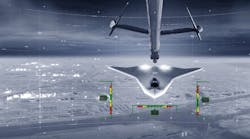The latest version of BAE Systems' Athena 1920 thermal camera core recruits infrared (IR) detection to provide high-definition images of objects within a 360° scan. Well-suited for wide-area surveillance, the thermal camera core (see image above) is a capable machine partner to provide vehicle and troop protection in hostile environments. It's small and light in weight for easy transport to locations where it's most needed for such applications as threat detection, monitoring, and surveillance even under conditions in which visual cameras are impeded.
Robyn Decker, director of Lexington Business Center and Sensor Solutions at BAE Systems, explained the need for product improvements, “BAE Systems has been at the forefront of thermal sensor design and manufacturing for years, and we keep advancing the technology. Athena 1920 is already one of the most capable high-definition thermal sensors, and we’ve enhanced it to help our customers better execute their challenging missions.”
Decker points out that the company’s capabilities in not only designing solutions, but design-for-manufacturing successes, have accounted for its speed in transforming customers’ challenging needs into practical, reliable solutions.
The thermal camera core features protective coatings to guard against corrosion as well as high heat and humidity. Its success in space and high-altitude environments is buoyed by redundant software-based, single-event upset mitigation, which can minimize the effects of high shock and vibration as well as the impact of high levels of radiation in those environments. The thermal camera core is available with frame rate options of 30 or 60 Hz and frame synchronization for multiple-camera applications.
